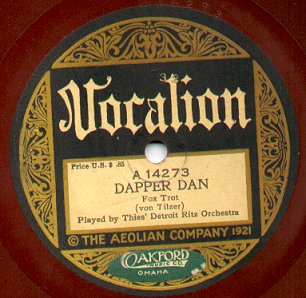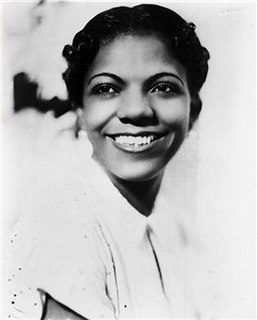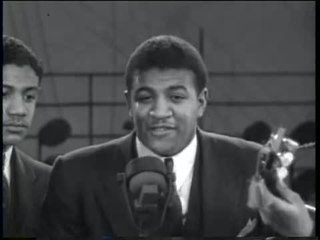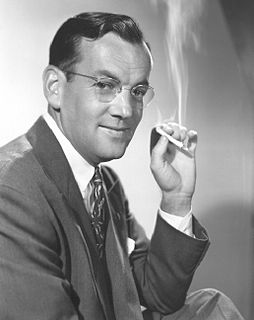
Edward Kennedy "Duke" Ellington was an American composer, pianist, and leader of a jazz orchestra, which he led from 1923 until his death over a career spanning more than fifty years.

The Original Dixieland Jass Band (ODJB) was a Dixieland jazz band that made the first jazz recordings in early 1917. Their "Livery Stable Blues" became the first jazz record ever issued. The group composed and recorded many jazz standards, the most famous being "Tiger Rag". In late 1917 the spelling of the band's name was changed to Original Dixieland Jazz Band.

Paul Samuel Whiteman was an American bandleader, composer, orchestral director, and violist.

For Decca's Vocalion label, see Disques Vogue

Ivie Anderson was an American jazz singer. She enjoyed success during the 1930s, touring and recording with the band of Duke Ellington. She died in 1949, aged 45.

"Tiger Rag" is a jazz standard that was recorded and copyrighted by the Original Dixieland Jass Band in 1917. It is one of the most recorded jazz compositions. In 2003, the 1918 recording of "Tiger Rag" was entered into the U.S. Library of Congress National Recording Registry.
"Don't Get Around Much Anymore" is a jazz standard written by composer Duke Ellington. The song was originally entitled "Never No Lament" and was first recorded by Duke Ellington and his orchestra on May 4, 1940. "Don't Get Around Much Anymore" quickly became a hit after Bob Russell wrote its lyrics in 1942.

"Dinah" is a popular song published in 1925 and introduced by Ethel Waters at the Plantation Club on Broadway. It was integrated into the show Kid Boots. The music was written by Harry Akst and the lyrics by Sam M. Lewis and Joe Young. Hit versions in 1926 were by Ethel Waters, The Revelers, Cliff Edwards, and Fletcher Henderson.
"I Didn't Know About You" is a 1944 song composed by Duke Ellington, with lyrics written by Bob Russell.
"(In My) Solitude" is a 1934 jazz standard composed by Duke Ellington with lyrics by Eddie DeLange and Irving Mills.
This is the discography of Duke Ellington. Most of these recordings are listed by the year they were recorded rather than year released. Reissues are listed for most of the recordings released before the 1950s, as the original 78s are rare. The US chart listing information should be considered tentative because sources like the Joel Whitburn's Pop Memories does not take the cheaper dime-store records into account. During this period, records sold by song title, not by artist, although there are exceptions.
"Them There Eyes" is a jazz song written by Maceo Pinkard, Doris Tauber, and William Tracey that was published in 1930. One of the early recorded versions was performed by Louis Armstrong in 1931. It was made famous by Billie Holiday, who recorded her version in 1939 for Vocalion Records. A version by Emile Ford & The Checkmates reached number 18 on the UK Singles Chart in 1960.

Between 1938 and 1944, Glenn Miller and His Orchestra released 266 singles on the monaural ten-inch shellac 78 rpm format. Their studio output comprised a variety of musical styles inside of the Swing genre, including ballads, band chants, dance instrumentals, novelty tracks, songs adapted from motion pictures, and, as the Second World War approached, patriotic music.
"Liza " is a song composed by George Gershwin with lyrics by Ira Gershwin and Gus Kahn. It was introduced in 1929 by Ruby Keeler in Florenz Ziegfeld's musical Show Girl. The stage performances were accompanied by the Duke Ellington Orchestra. On the show's opening night in Boston on June 25, 1929, Keeler's husband and popular singer Al Jolson suddenly stood up from his seat in the third row and sang a chorus of the song, much to the surprise of the audience and Gershwin himself. Jolson recorded the song a few days later on July 6, 1929, and his rendition rose to number nine on the charts of the day.

Eastbourne Performance is a live album by American pianist, composer and band leader Duke Ellington featuring his final recorded concert at the Congress Theatre in Eastbourne, England in December 1973 and released on the RCA label in 1975.

"East St Louis Toodle-Oo" is a composition written by Duke Ellington and Bubber Miley and recorded several times by Ellington for various labels from 1926-1930 under various titles. This song was the first charting single for Duke Ellington in 1927 and was one of the main examples of his early "jungle music". This composition was covered by Steely Dan on their 1974 album Pretzel Logic.

The Smithsonian Collection of Classic Jazz is a six-LP box set released in 1973 by the Smithsonian Institution. Compiled by jazz essayist and historian Martin Williams, the album featured tracks from over a dozen record labels spanning several decades and genres of American jazz, from ragtime and big band to post-bop and free jazz. The compilation has been recognized as an invaluable document of jazz history and maintains a legacy as introductory listening for new jazz fans as well as scholarship due to its extensive liner notes.
"Blues in My Heart" is a 1931 jazz standard. It was written by Benny Carter and Irving Mills.

Harlem Jazz, 1930 is a compilation album of phonograph records assembled by Brunswick Records during the American Federation of Musicians strike, cataloguing the effect of the Harlem Renaissance on what was known as Dixieland, or "hot" jazz in New York City. The album features venues the orchestras played at the time of the recordings, such as Connie's Inn or The Cotton Club.

Ellingtonia, Vol. One is a compilation album of phonograph records assembled by Brunswick Records during the American Federation of Musicians strike, cataloguing the early, experimental Brunswick and Vocalion recordings of Duke Ellington in the middle of the Harlem Renaissance. During the later Swing era, the recordings were praised for accurately predicting the developments in the Big band genre several years in advance.

















